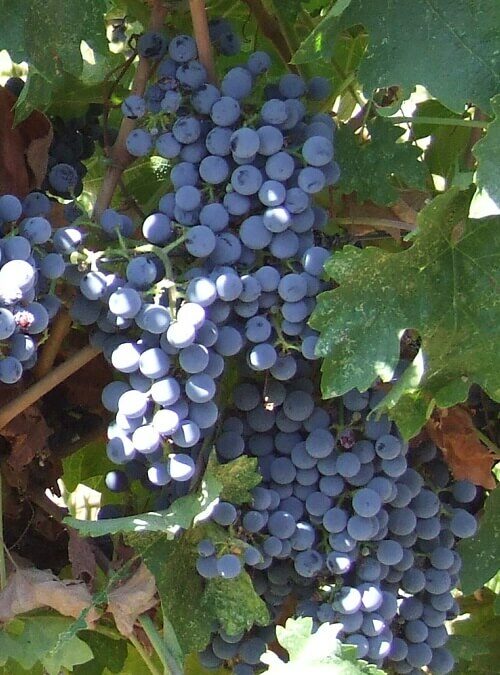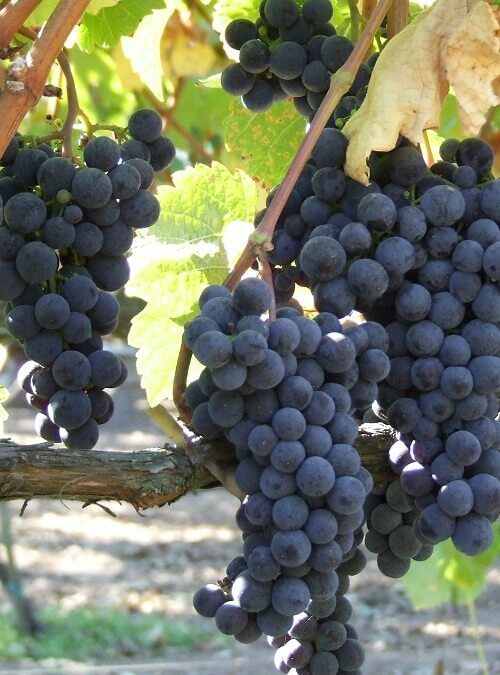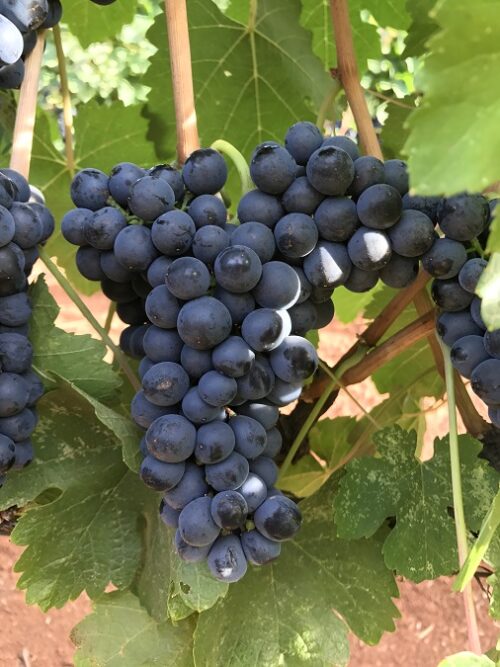-
A parent to Merlot and Cabernet Sauvignon, Cabernet Franc is another of the Bordeaux varieties. Cab Franc is lighter than Cab Sauv with different flavor profiles. It ripens a little earlier than Cab Sauv and is very popular on the East Coast of the U.S. as it has a good tolerance for cold winter temperatures. Like Cab Sauv, Cab Franc has small, thick skinned berries that have a high tolerance to diseases.
-
Cabernet Sauvignon is our most popular selection. It is the most widely planted and recognized red wine variety in the United States. It is suitable for all growing regions where grapevines can be grown. Cabernet Sauvignon is easy to grow and care for and has low disease susceptibility. It is very tolerant to cold winter temperatures as well as high summer temperatures.
-
Grenache is a late ripening variety that prefers hot and dry climates. Given the right conditions this variety can produce a large crop that will need to be balanced in the vineyard for quality wine production. The wines produced from this variety usually show bright red fruit and subtle spice characteristics.
-
One of the six main Bordeaux varieties, Malbec, or Cot as it is called in France, is a great stand-alone variety but normally used as a blender. It is fairly productive and provides deep color. It is grown throughout the world including France, the U.S., Argentina and Chile. However, it is not very winter hardy, so it is not recommended for regions dipping below 20 degrees F.
-
Another Bordeaux variety, Merlot is one of the most widely planted varieties in the world. It produces medium tannic wines with black fruit characteristics. It is consistently productive with loose clusters and large berries. It is suitable in hot and cooler climates and has good winter hardiness.
-
Sagrantino is an Italian grape variety indigenous to the region of Umbria. It is vigorous yet low-yielding vine. It flowers early, but requires a long hot season to ripen.
-
More popular as Petite Sirah in the U.S., this variety produces inky, black, full bodied wines. It is often used as a blender with Zinfandel. But, it is also blended in small amounts with other varieties to add color, and structure. The berries are small (petite) and the clusters are tightly packed making it highly susceptible to bunch rot. It is not considered a cold tolerant variety.
-
This is the latest ripening variety of the Bordeaux family of grapes. It produces rich colored wines with high tannins. The clusters and berries are small. It is grown throughout the world in small quantities. But, it is not considered a winter hearty variety.
-
Although Primitivo is considered to be the same as Zinfandel (they have the same DNA), we list Primitivo differently because this selection is a looser cluster than Zinfandel and is less susceptible to rot and other diseases. It can be used to make red and white (rose) wine. Primitivo is not as winter cold hardy as other varieties but can be planted where temperatures stay above 15 degrees F. It is a high producing variety that makes fruity wines that can be consumed at a young age.
-
Touriga National is a red wine grape variety from Portugal. It is a lower yielding fruit, but is a big part in blends used for ports. The vine is very vigorous, and can withstand higher heat in rockier climates.












